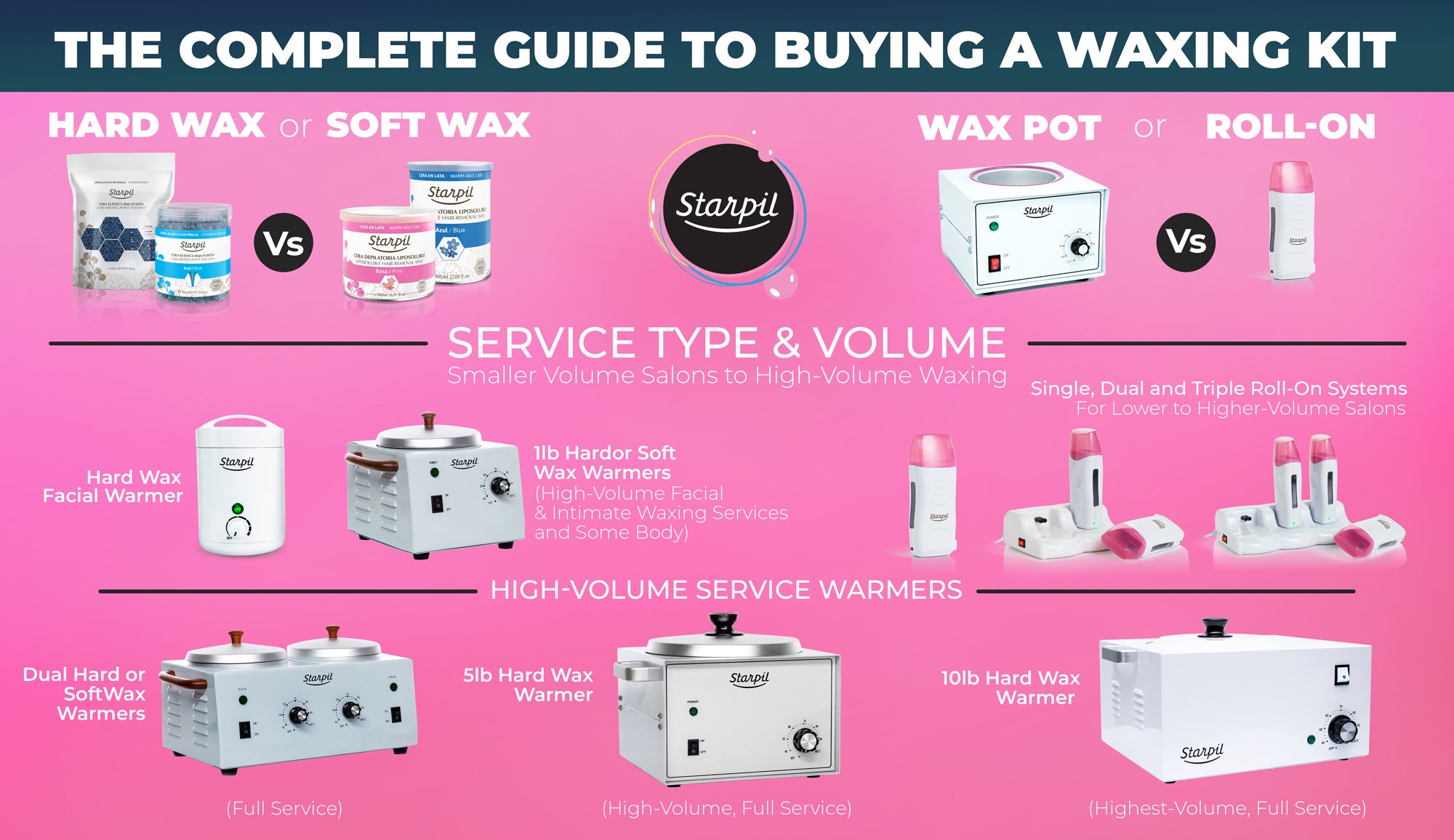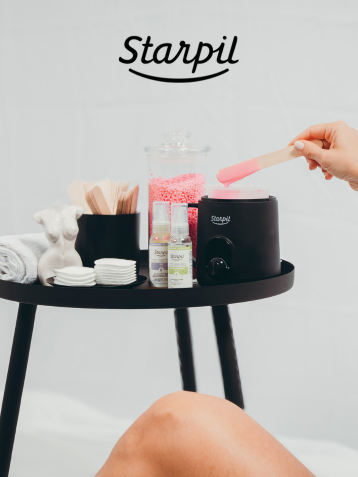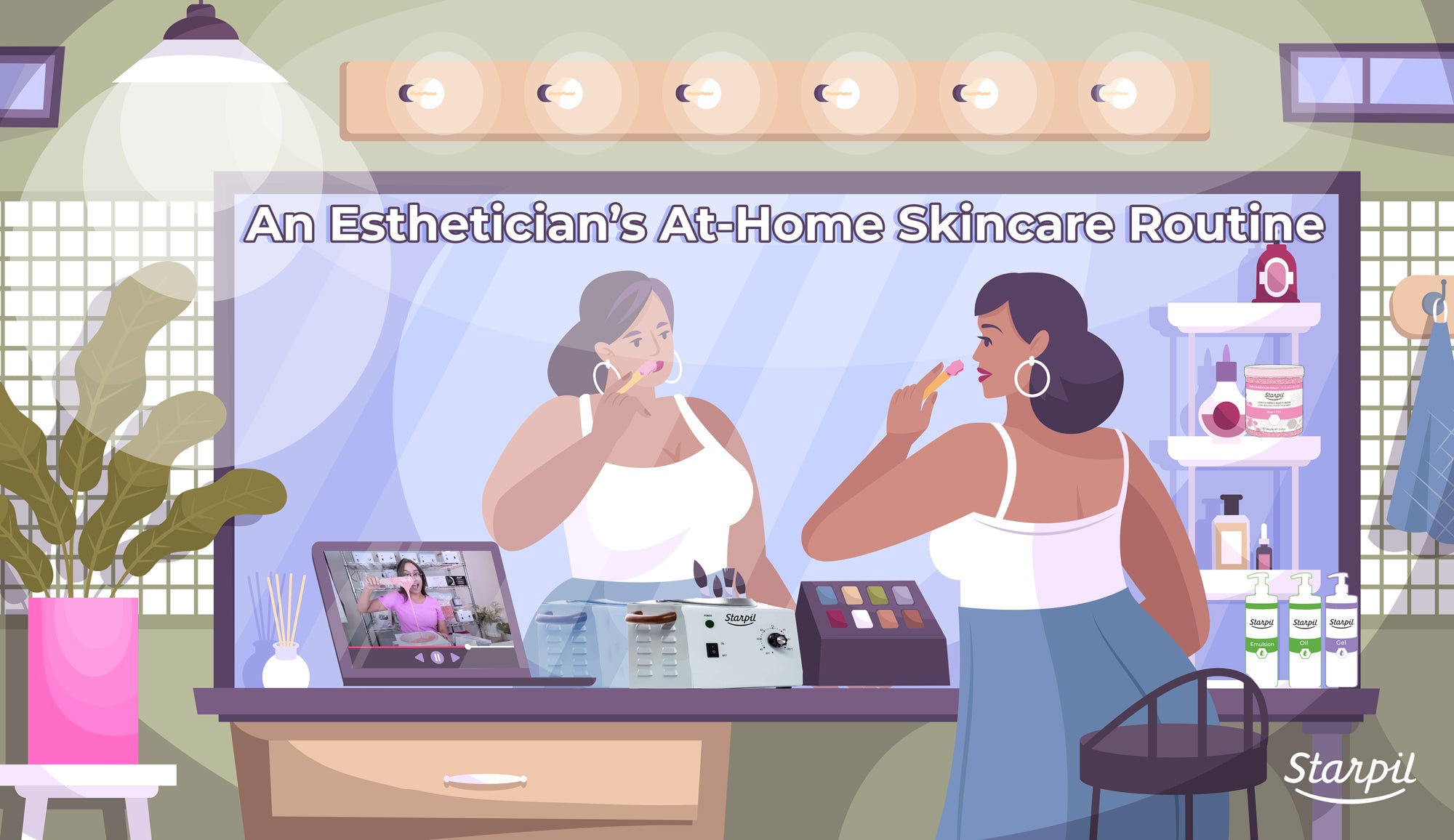How to Get Rid of Oily Skin

Oily skin can impact the quality of not only your everyday skin or makeup routine, but the quality of your waxing results as well. If you just can’t seem to shake acne breakouts, this can also leave you feeling self-conscious, uncomfortable, or insecure. It’s then that learning how to get rid of oily skin becomes less of a thought and more of a priority.
Whether you or your clients deal with constantly oily skin and wonder if or how this can be corrected, we’ve got some great tips for how to deal with this issue and how to get rid of oily skin in a way that balances it instead of stripping your skin.
Table of Contents
- Is My Skin Dry or Oily?
- What Causes Oily Skin?
- Is Oily Skin Bad?
- Waxing Oily Skin: WhatKnow
- How to Make Skin Less Oily Before waxing
- How Do You Get Rid of Oily Skin Nally?
- What to Use for Oily Skin?
- Final Toughts
When you have the right skincare for oily skin, good at-home habits to keep your skin in its best condition, and know what to use for oily skin before, during, and in-between waxing, you’ll set yourself up for success and will keep your skin glowing instead of greasy!
READ: 5 Tips for How to Wax Sensitive Skin
Is My Skin Dry or Oily?
While a trained professional can spot oily skin from a mile away, some people may not know what their skin type is or how to recognize the different sorts of skin out there. Some telling signs that you might have an oily skin type are if the skin feels sticky on the cheeks and forehead just minutes after being washed.

You can also check by taking a blotting sheet and pressing it to your cheek. If the sheet becomes transparent over a large area, this can also be indicative of oily skin. Dry skin, on the other hand, may feel tight, itchy, and sensitive after cleansing.
The characteristics of oily skin can however often be mistaken or confused with dehydrated skin. Keep in mind that you can also have an oily skin type and experience additional oily overproduction because of dehydration.
Dehydrated skin lacks water and can still flake and peel underneath a layer of oil, which can lead some to believe their skin is actually dry instead of dehydrated and oily.
Sometimes, excessive oil production can be linked to dehydration and is the skin’s way of keeping itself lubricated enough to do its job. Correcting dehydrated skin can help you to correct your oily skin by addressing the problem at the source.
READ: Waxing and Dry Skin
What Causes Oily Skin?

Oil is made up of sebum (fats) that help protect the skin and moisturize it. Sebum is produced by the sebaceous glands that lie just underneath the surface of the skin.
Excessive oil production can be caused by genetics, hormonal issues, diet, or stress management. All of these factors and more can have a big impact on your skin and oil production.
READ: Working with Dry vs. Dehydrated Skin: A Guide for Professionals
Is Oily Skin Bad?
When skin is oily, it can trap debris and bacteria within the pores, clogging hair follicles, creating inflammation and acne.
These blocked pores can be suffocating the skin, and limit detoxification, oxygen, and even blood flow. Blocked pores can also leave skin with a constant shine, make makeup come off quickly, and block skincare from actually penetrating and delivering ingredients into the skin.
What stops oily skin from getting out of control also doesn’t just come down to your respective skincare routines. Diet and stress management, sleep patterns, and medications can also contribute to oily skin issues.
READ: Little Known Tricks for Congested Skin
Waxing Oily Skin: What to Know
If you’re looking to get waxed but have oily skin, you might wonder how your skin time might impact your ability to have the service or your results. In addition to the results you’ll receive, your skin also influences what formula an esthetician will use and how they’ll approach your service.
Is Oily Skin Bad for Waxing?
Oily skin can affect skin’s texture, smoothness, and even waxing results by leaving wax unable to fully adhere to the hairs.
An uneven wax job can result in having to apply wax more than once, which can sometimes be irritating - especially if your client has sensitive skin. Additionally, if the wax formula being used isn’t hospitable to your client’s skin type or sensitivity levels, it can cause additional unneeded irritation.
If your skin isn’t in the right condition for waxing, it can result in uneven hair removal or cause patchy growth patterns, which can lead to ingrown hairs and acne after waxing.
READ: Why Using Pre & Post Wax Products is a MUST!
How to Make Skin Less Oily Before Waxing
Clients with oily skin are susceptible to irritation, inflammation, ingrown hairs, and acne after waxing. To keep their skin in its best condition and to protect them from these issues, you’ll need to ensure that your clients have the education they need to prepare themselves for waxing.
Having the right pre and post-wax care routine will make all of the difference in getting great hair removal results and maintaining healthy skin in between appointments.
What are the Most Important Things Clients Can Do Before Waxing?
Clients with oily skin will need to exfoliate and moisturize skin properly the day of or night before their appointment. They need to be gentle to not strip the skin completely of its protective acid mantle and why using a lotion for oily skin is a must.
Though everybody should be exfoliating and moisturizing before their appointment, those with oily skin need to take extra care to perform this process to make sure their skin is in its best condition.
How to Stop Oily Skin From Getting in the Way of Waxing Hair Removal During an Appointment
The best way to stop oily skin from inhibiting your waxing service is to practice proper waxing prep. Use Starpil’s Pre-Wax Gel to cleanse and exfoliate skin before waxing, or Calendula Pre-Wax Gel for those with particularly breakout-prone skin.
The key with waxing is to keep your client’s skin protected, hydrated, and dry simultaneously - which seems more daunting than it actually is!
Our Pre-Wax Gel doesn’t strip the skin but does remove excessive oil. It’ll also infuse skin with skin-loving ingredients that protect, and soothe while reducing bacterial growth.
Some estheticians use a light veil of cornstarch or baby powder on severely oily areas right before applying wax to keep the skin surface clean and dry.
READ: Waxing at Home: The Complete Beginner’s Guide
If you’re wondering how to best prepare to wax oily skin, follow the following steps to do so:
1. Use the Best Wax for Oily Skin
Just like your pre-wax care, the best wax for oily skin needs to continue the soothing, cleansing, protecting, and anti-bacterial experience that your prep provides. We love Calendula Hard Wax because it’s infused with ultra-calming calendula and coil-balancing tea tree oil. This wax serves to provide great hair removal while protecting the skin from debris or bacterial build-up to lessen breakouts.
Another sensitive skin-friendly wax that’s ideal for detoxifying sensitive or problematic skin is our Coral Hard Wax. This wax uses Mediterranean sea coral and calcium powder to detox, even, and brighten skin.
2. Provide the Best Home-care Products and Advice
Help clients understand how to control oily skin at the source by educating them on having the right routine dedicated to providing hydration and protection to skin, and keeping it pathogen-free.
Advise clients to keep wearing breathable clothing, exfoliate gently, and avoid activities that might produce excessive sweat, including working out and having sex for at least 24-hours after their appointment.
For intimate waxing, use a Brazilian Waxing Mask or an ingrown hair serum the day after waxing to keep the freshly waxed area protected, nourished, and detoxified.
READ: Dermatologist vs. Esthetician: Who’s Better for My Skincare?
How Do You Get Rid of Oily Skin Naturally?
Though you can’t eliminate oily skin per se, there are plenty of ways to minimize its effects and maintain the kind of glow you want by living a balanced lifestyle that supports, hydrates, and protects the skin.
If you’re looking at ways to balance your lifestyle and your skin in the process, you’ll want to remain conscientious about managing stress levels, eating a healthy diet, and practicing a responsible skincare routine that will balance oil production.
How to Prevent Oily Skin Through a Balanced Lifestyle
For some, oily skin is something they have to manage due to genetics, but for others, it’s something that can be prevented through the following lifestyle and habit changes.
Diet and Exercise
Just like your skincare routine, your diet also needs to provide hydration and be filled with antioxidants. Avoid foods that affect hormonal changes like an abundance of sugars, trans fats, and fried foods. Exercise helps with blood and oxygen flow and detoxification.
Managing Stress
Learning how to manage stress through any means helps to limit oil-causing hormones in your body like cortisol. Learn to meditate, see a therapist, or do whatever you need to do to manage stress.
Keep It Cool
When temperatures rise, so do oily skin’s chances for acne. Focus on how to fix oily skin by using cooling products, keeping skin clean by blotting throughout the day, or keeping cleansing wipes nearby.
Sleep
Lack of sleep can increase hormonal issues and affect the choices we make throughout the day. It also dulls our ability to manage stress.
READ: Calendula Benefits for the Skin
What to Use for Oily Skin?
Suggesting the best skincare for oily skin or home remedies for oily skin outside of the waxing realm can help your clients in the long run and make their hair removal results even better.
READ: Best Esthetician Service to Offer Clients
What are the Best Products for Oily Skin?
As we’ve highlighted, any product used for the skin shouldn’t strip the skin completely. When skin is stripped, it compensates by producing more oil. A face cleanser for oily skin shouldn’t contain strong cleaning agents.
When learning what to do for oily skin, the goal is to balance oil production, not eradicate it. Skincare for oily skin like moisturizer or lotion for oily skin should be oil-free or oil balancing. Instead of these products that will make your skin worsen, use hyaluronic acid with a heavy night cream and a light daily moisturizer.
If you’re interested in having the right skincare regimen recommendations for clients with oily skin, consider the Maystar Essentials Acne & Oil Balance Kit as an add-on retail offering that will keep their skin clear and balanced.
This kit includes Maystar’s Micellar Water, Exfoliating Facial Scrub, Face Tonic with Rose Water, Oil Balance Treatment Gel, and Oil Balance Face Lotion to create the perfect approach to balance oily skin and dissuade breakouts.
READ: How to Get Smooth Skin: Top Dermatologist Recommendations
An Oily Skin Routine for the Face

Daily Oily Skin Routine:
[Daytime]
Step 1: Use Maystar Essentials Makeup Remover cleanser for oily skin.
Step 2: Follow up with Face Tonic with Rose Water misted on the face.
Step 3: Apply an oil-free or balancing moisturizer like the Oil Balance Face Lotion.
Step 4: Use an SPF 30 - 50 for oily skin.
[Nighttime]
Step 1: Use a cleanser for oily skin like the Maystar Essentials Makeup Remover to remove dirt and debris.
Step 2: Mist with the Face Tonic with Rose Water.
Step 3: Apply a lightweight anti-aging serum or retinol when not waxing.
Step 4: Follow with an oil-balancing moisturizer (or a nighttime moisturizer for those under 25).
Weekly Oily Skin Routine:
Gently exfoliate and use clay detoxification masks once to twice a week.
Products for Oily Skin on the Body
It’s okay to apply oils for oily skin while still wet after a cleansing shower. Use a light layer of jojoba oil while the skin is still damp to lock in moisture. This will help balance water moisture in dehydrated, oily skin.
READ: Exfoliating and Waxing: The Definitive Guide
Final Thoughts
When teaching clients how to treat oily skin or when treating this skin type yourself, you need to identify the source of the skin’s excess oil production prior to treatment.
Focus on how to get rid of oily skin through changing certain lifestyle habits and always keep skin hydrated, protected, and bacteria-free in and out of the wax room.
Having the right skincare routine specifically targeted for oily skin will also help in keeping it balanced and stem excess oil production. If you think your oily skin is linked to hormonal or genetic factors, you can also consult a dermatologist to see if there’s anything else you can do to tackle this notion.
At the end of the day, when treating oily skin to prep it for waxing or just to balance it for your day-to-day life, make sure not to strip your skin and treat it with care. Your daily routine can make all the difference, and always stay attuned to your skin’s needs.
WATCH: Dermatologist Approved Oily Skincare Routine









Comments